- Учителю
- London's most famous landmarks - экскурсия по Лондону, 5 класс
London's most famous landmarks - экскурсия по Лондону, 5 класс
London's
most famous landmarks
Экскурсия по Лондону - наиболее известные
достопримечательности
Учитель Оленева Виктория Сергеевна
BuckinghamPalace

The Palace was originally called Buckingham House when it was built for the Duke of Buckingham. Although it was bought by King George the Third in 1762 it wasn't until 1837, when Victoria became Queen, that the Palace started to be used as the principal home of the Royal Family. The gardens of the Palace cover an area of almost 40 acres and are the largest private gardens in London.
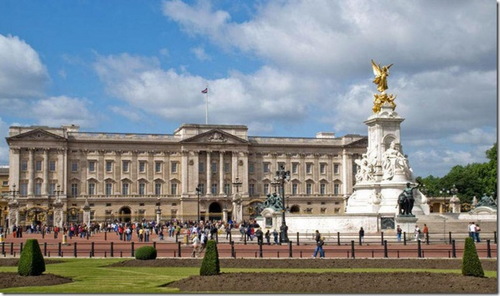
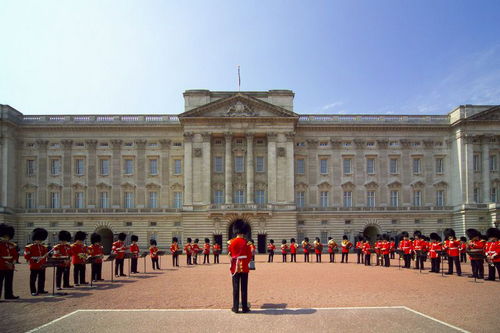
Westminster Abbey

Ahead of us is Westminster Abbey. Consecrated in 1045 by Edward The Confessor, it is the most historic church which you can visit in London. It was in this church that on Christmas Day 1066, William the Conqueror was crowned and since then every King and Queen except two have been crowned here. It is also the resting place for many of our earlier Kings and Queens.
As well as Royals, many famous people are commemorated and interred here in the Abbey including Charles Dickens, George Frederick Handel, Sir Isaac Newton, Thomas Hardy, Laurence Olivier, David Livingstone and Charles Darwin. Many Royal Weddings have also taken place here including that of Her Majesty the Queen Elizabeth the Second and Prince Phillip in 1947, and, most recently of course, Prince William married Catherine, or 'Kate' Middleton here, on the 29th of April 2011. They are now officially titled the Duke and Duchess of Cambridge. Westminster Abbey is a place not to be missed on any visit to London.
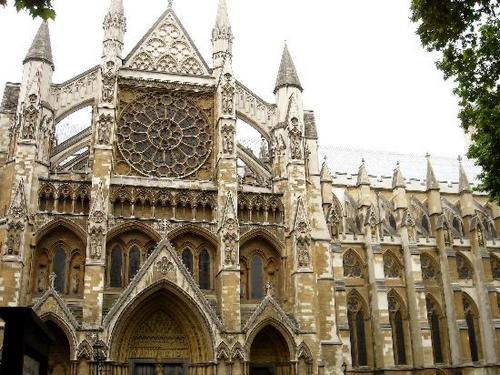
The Changing of the Guard

The Coldstream, Grenadier, Welsh, Irish and Scots Guards Regiments. It's these regiments which you can see taking a part in the changing of the guard ceremony which happens outside of Buckingham Palace at 11.30 in the morning. During the summer months the Changing of the Guard occurs every day but during the winter (and weather permitting), on every other day.
Buckingham Palace is the least favourite of her Majesty's homes, she prefers Balmoral in Scotland, and considers Windsor Castle to be her family home .She refers to Buckingham Palace as her London office. In August and September, the State Apartments and gardens are open to the public to raise funds for the reparation of that part of Windsor Castle destroyed in the terrible fire of 1992.During the winter months you cannot gain access to the Palace but to get a sense of the way our monarch lives you can always visit the Queens Gallery or the Royal Mews.

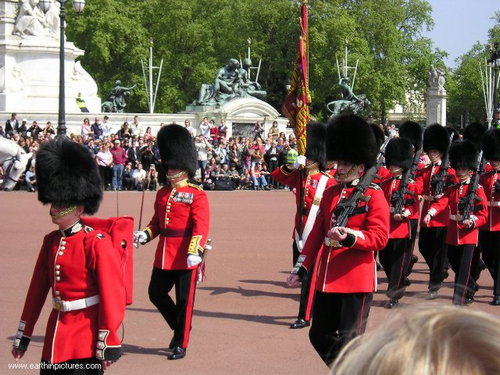
Big Ben
On the end of the Houses of Parliament, is one of London's most famous landmarks, known as Big Ben. Big Ben is actually the largest bell within the tower and not the tower itself. Big Ben weighs 13 and a half tons , and is the bell that chimes the hour. To honour the Diamond Jubilee of our present queen, Elizabeth the Second, the clock tower is now officially known as 'The Elizabeth Tower'.
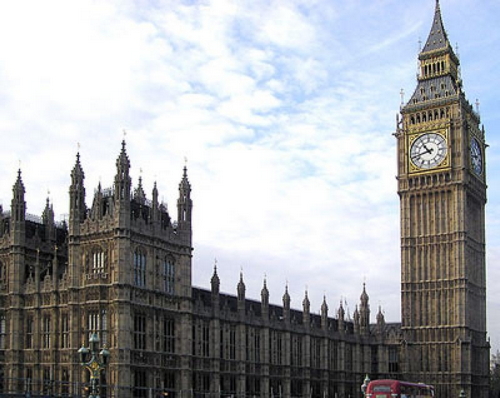
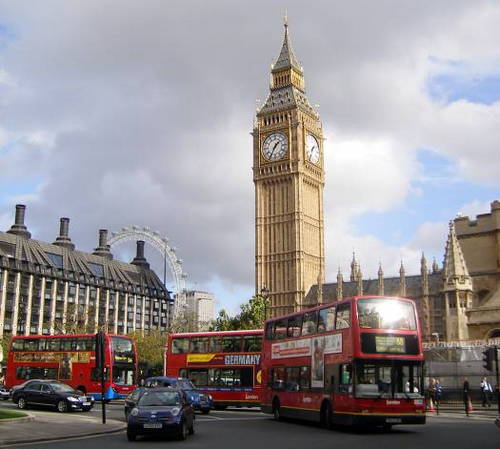
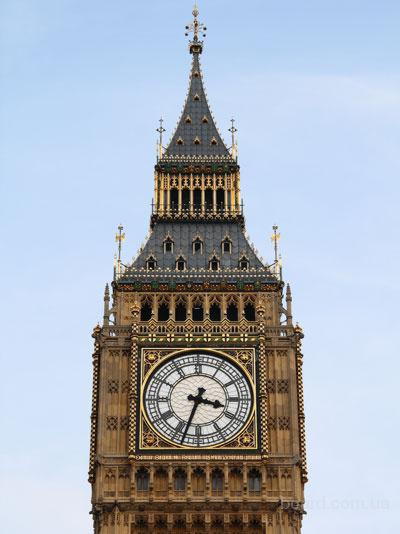

Downing Street, 10
Downing Street, number 10 has been the official home of our Prime Ministers since 1732. The Prime Minister is the man or woman who effectively runs the country in the name of theking or queen.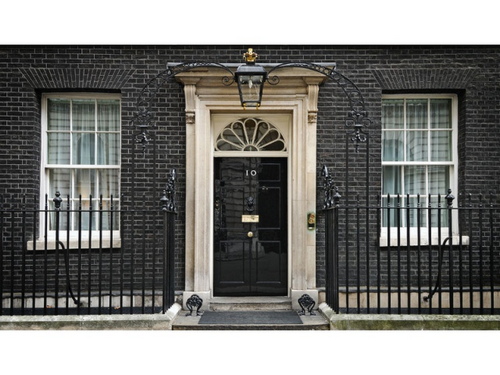

Trafalgar Square
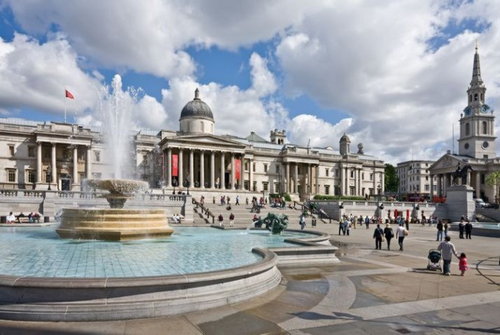
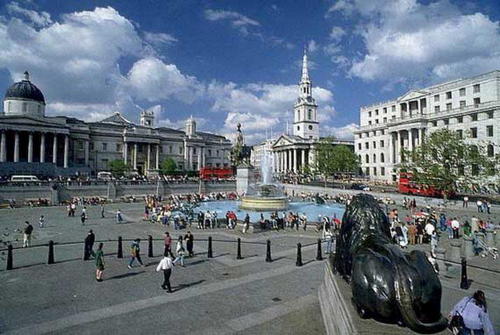

Trafalgar Square, directly ahead of us is Nelsons Column, one of London's most iconic landmarks. But look in front of the column at the statue of the man on horseback.
This is King Charles the First who is looking towards Whitehall to the place of his execution at the Banqueting House in 1649. The Statue was created during Charles's lifetime in 1633.
Following his execution, the statue was hidden for safe-keeping in a church crypt, as Oliver Cromwell and the Puritans, who then ran the country, were intent on systematically destroying all images of royalty.
Just behind the statue is a bronze plaque set in the pavement from which all distances from London are measured. Trafalgar Square was laid out to commemorate the Battle of Cape Trafalgar in 1805, a decisive battle where our naval hero Admiral Lord Horatio Nelson defeated the combined French and Spanish fleets.
Behind Nelsons Column, we see the National Gallery; well worth a visit, it contains one of the finest collections of western art in Europe, and is free of charge
Piccadilly Circus
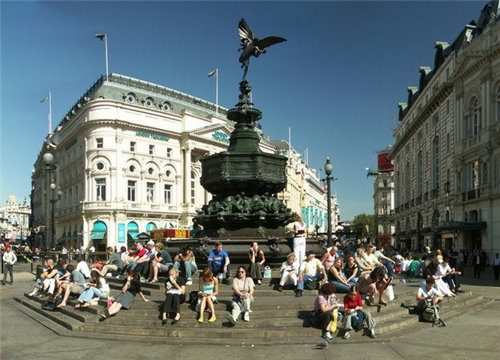
Piccadilly Circus is very central, and one of the most important junctions in London - surrounded by clubs, theatres, cinemas, restaurants and casinos, it's the beginning of what we call the ' West End', the entertainment centre of London. It gets very busy here at night, with lots of people, who come here for their entertainments. Piccadilly Circus is where the world's first electric advertising was placed in 1910.

Wellington Arch

This is one of the busiest traffic junctions in London, The Duke of Wellington Place, known locally as Hyde Park Corner. The large arch in the centre of the traffic island is the Wellington Arch designed by Decimus Burton. Sometimes referred to as the Constitution Arch, it stands in the middle of an area dedicated to the first Duke of Wellington, Arthur Wellesley. He was the victor at the Battle of Waterloo in 1815, where he defeated the armies of Napoleon Bonaparte.
The arch was built to celebrate that victory, and is now open to the public. It contains a museum. On top of the arch, the statue known as 'Quadriga', the Angel Of Peace landing on the chariot of war, acts as a sort of balance, because around the arch there are many war memorials including the memorial to The Royal Regiment of Artillery with the howitzer on top pointing directly towards the battlefield of the Somme in France, where so many fell during the First World war.
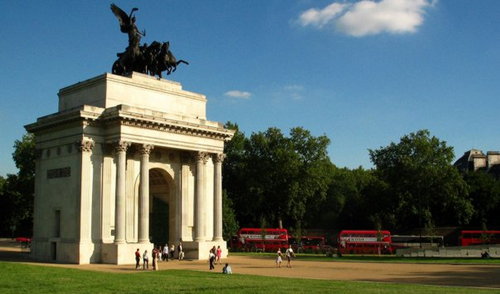
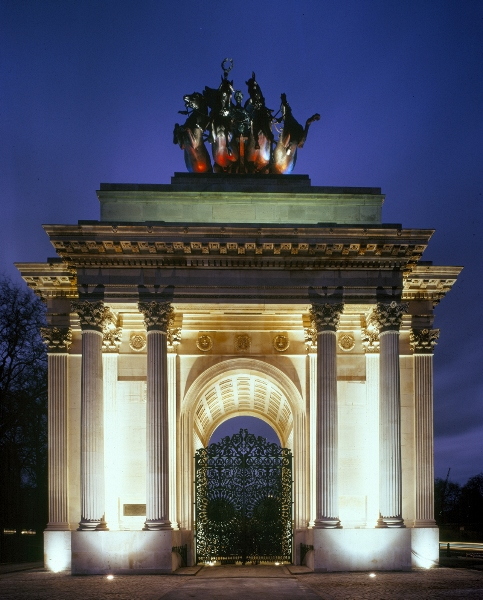
Albert Hall
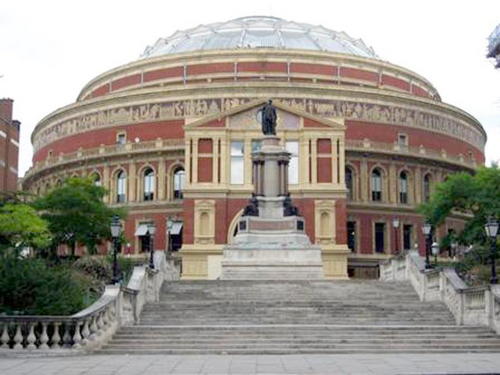
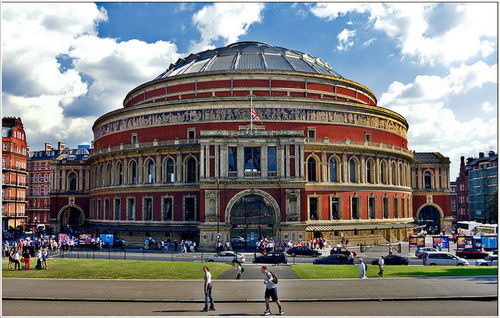
The Royal Albert Hall, as it was designated by Queen Victoria when it was dedicated by her in 1872, commemorating her dearly beloved Prince Albert, who sadly had passed away in 1862.
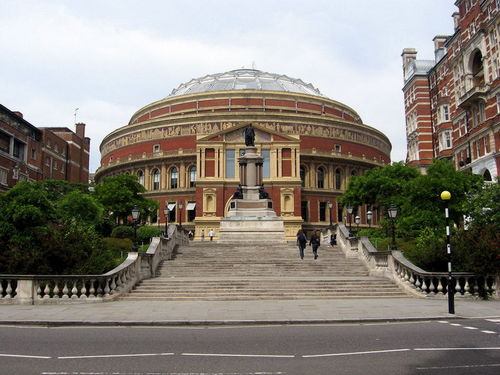
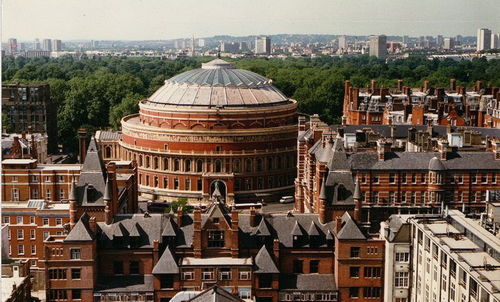
The Albert Memorial
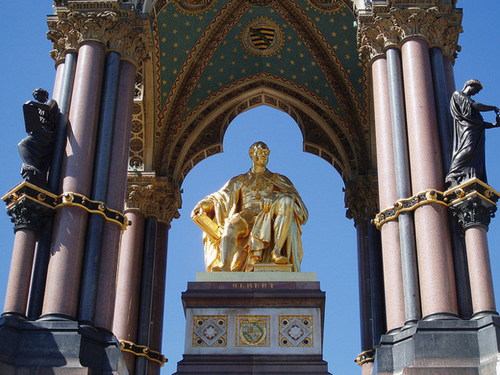
The Albert Memorial, the finest Neogothic memorial in London by Sir George Gilbert Scott, with a gilded statue of Queen Victoria's husband, reliefs of 169 painters, architects, musicians, poets and sculptors, people who have greatly helped to increase the sum of human knowledge. The four outer corners show the elephant for Asia, the bull for Europe, the Bison for American and the Camel for Africa.

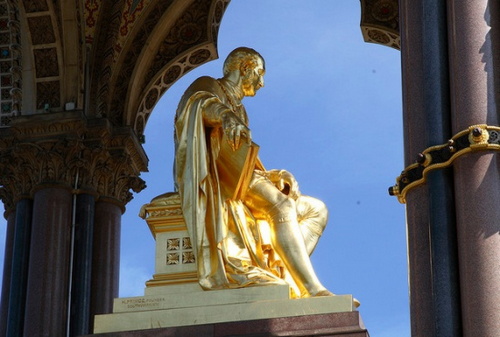
Victoria and Albert Museum
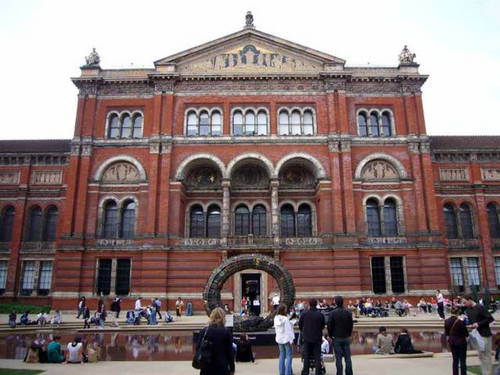
The beautiful Victoria and Albert Museum known affectionately as the V & A, one of the world's finest collections of art and design. It was opened in 1901 by Edward the Seventh, the eldest son of Queen Victoria
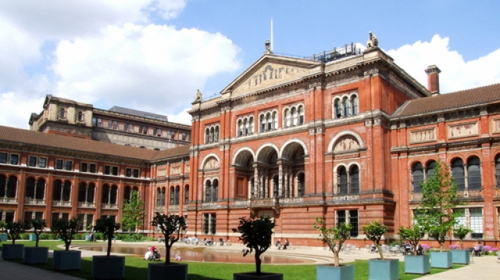
Hyde Park Speakers' Corner
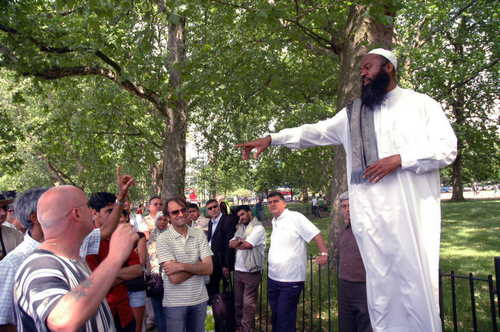
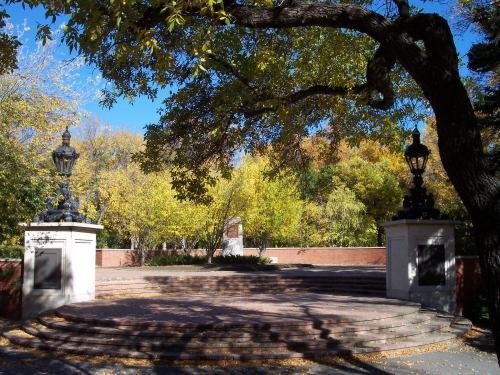

One of London's greatest institutions, Speakers Corner. This is an area of London where anybody can enjoy freedom of speech. Come along here on a Sunday and listen to religious, political or humorous speakers who enjoy having arguments with their audience. And, if you've a mind to, have a go yourself. But remember, Sundays only.
The speakers normally stand on ladders or boxes (traditionally a soap-box); the reason for this is that they must be six inches above the soil of the nation, so they cannot be arrested for Blasphemy, Treason or Heresy! There are four basic rules. You cannot swear 'excessively' and you are not allowed to incite a riot, beg for money, or insult the monarch.Apartfromthis- anythinggoes!
St Paul's Cathedral
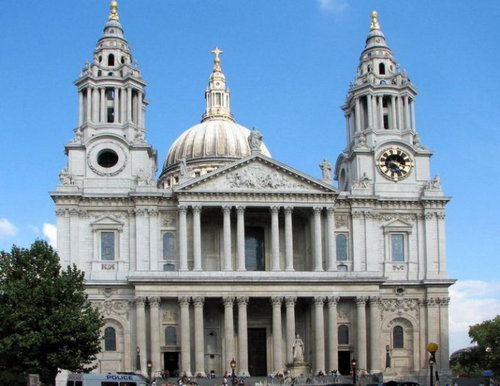
The magnificent St Paul's Cathedral. Designed by Sir Christopher Wren it was completed in 1710, after the previous one had been badly damaged in the Great Fire of London in 1666.
It is the largest classical church in Northern Europe, and the design of St. Paul's was inspired by the churches of the Medici in Florence. You can climb to the Golden Gallery on top of the Cathedral from where you have the most sensational views across the City of London. Buried in the crypt of the cathedral are Lord Nelson, Arthur Wellesley (The Duke of Wellington) and also Sir Christopher Wren, the Cathedrals great architect, who lived for 92 years. Engraved on Wren's tomb the immortal words 'SiMonumentumRequiris -Circumspice' - 'if my monument you seek, look around you'.
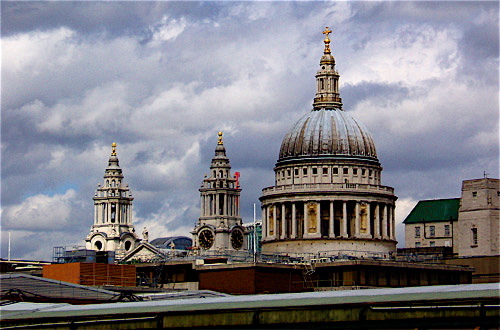
The Globe Theatre
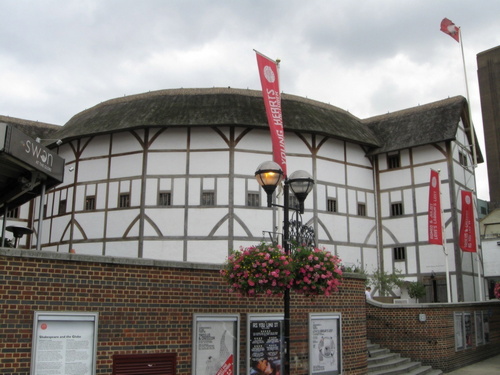
The white building with the thatched roof is the reconstructed Shakespeare's Globe Theatre. It was rebuilt by the late actor Sam Wannamaker. Many of the greatest plays in the English language were first performed at the Globe after it was first built in 1599. A spark from a cannon used in a production of Shakespeare's "Henry the Eighth" set light to it in 1613 and it was destroyed.
This whole area has now being rejuvenated, as an educational, cultural and entertainment complex with Shakespeare's Globe Theatre and the Tate Modern as the centrepieces. In the early 1600s in this area there would have been rowdy taverns and bawdy houses in these narrow streets close to the River Thames. Sometimes 3000 people would descend on the Globe to see a play in those days .All public entertainments were banned in the City of London. Even then, it was a place of business. So it was here in Southwark, by the Bankside area, that people came for their entertainments. The modern version, the International Shakespeare Globe Centre, was inspired by the determination and vision of the late actor and director, Sam Wanamaker.
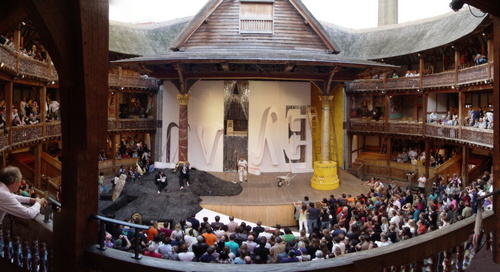
Tower Bridge
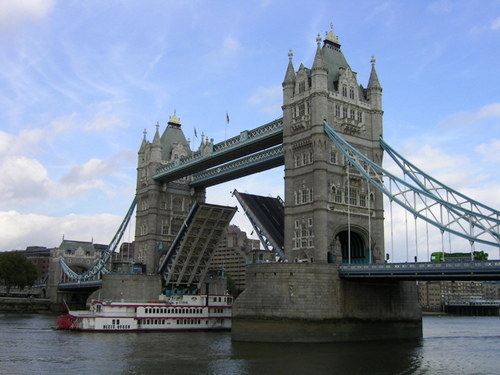
Perhaps the prettiest bridge in the world -Tower Bridge. Often mistaken for London Bridge, but that is Tower Bridge.
It was opened in 1894, and the two halves of the road between the Towers open up to allow tall ships to pass through, because the area between here and Tower Bridge, known as the 'Pool of London', is where the warehouses used to store cargoes brought by ships from all over the world. It was one of the focal points for the Queens Diamond Jubilee celebrations, the bridge opened to salute the great flotilla of a thousand boats. ThatwasinJune 2012.
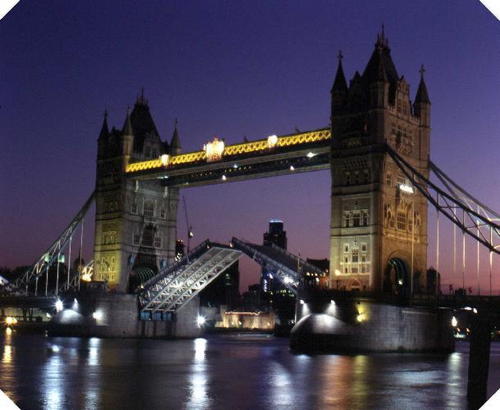
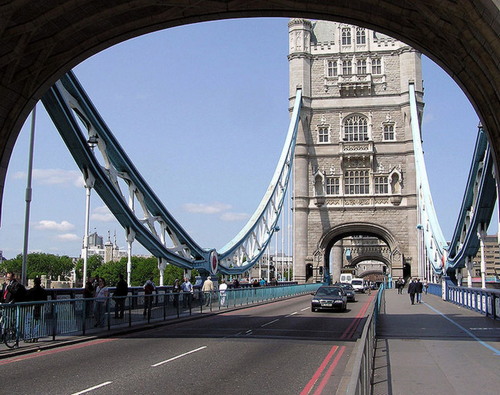
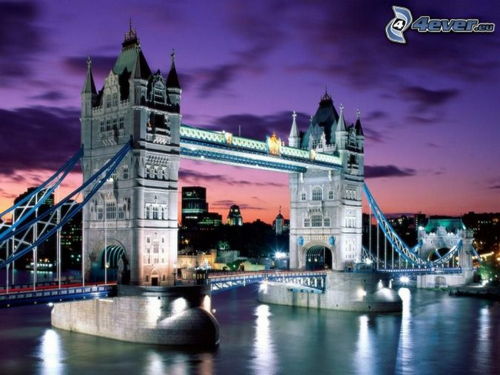
The Tower of London
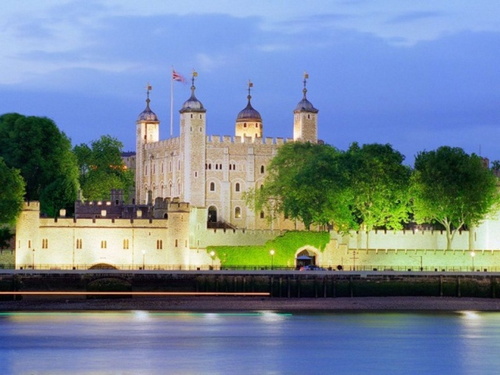
One of London's most famous landmarks coming into view, Her Majesty's Royal Palace and Fortress, The Tower of London. A castle which is over nine hundred years old, it has been a royal residence, a prison, a Royal Mint, a menagerie and a place of torture and execution.
The oldest part of the complex is the White Tower, which was built around 1078 for William the Conqueror. The White Tower is the large square tower that you see on the left, the one with the flag flying.
It was here in the 1500s that Anne Boleyn and Catherine Howard, two of the six wives of king Henry the Eighth were executed. Many unfortunates suffered the same fate here in those days.
The Tower of London is home to the Crown Jewels: a priceless collection wore by kings and queens for coronations, including the two largest diamonds in the world.
The Tower's ceremonial guards, the Beefeaters, live within the walls with their families. They are recruited from the Armed Forces. To become a Beefeater, you must have served 22 years, the maximum term in the British Armed Forces. Their job is to guard the Crown Jewels.
The Tower of London is a world Heritage site, and is still technically, a Royal Palace, although no Royals live here anymore
London's Eye

The London Eye was constructed for the Millennium, and was only supposed to be here for two years, as a temporary structure. It has 32 pods, which can each hold 25 people, and it stands 450 feet above the river. It takes approximately 30 minutes to go all the way round on the London Eye

TobaccoDock
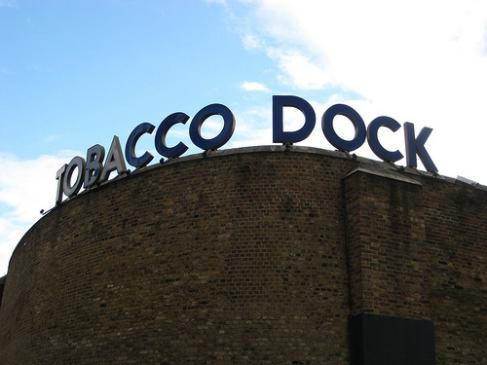
.
The building dates from 1811, and is only occasionally open to the public, but near the North entrance there is a bronze statue of a boy with a Bengal Tiger, which commemorates an event in the 1800s. At the time, a local man called Charles Jamrach ran the worlds largest exotic animal store, known as the 'Jamrach Animal Emporium' here on the Ratcliffe Highway. Being so close to the docks, he had a constant flow of seafarers eager to sell strange and unusual animals from distant lands, which they had obtained on their travels. He supplied many specimens from his menagerie to private collectors, even supplying the London Zoo. On one occasion, a fully grown Bengal Tiger escaped from the Emporium. A nine year old boy tried to pet it, thinking it was the biggest cat he had ever seen, when it snatched the boy in its jaws! The story goes that Charles Jamrach rushed to the scene and prised open the tiger's jaws with his bare hands, releasing the boy, who was amazingly unharmed. Charles Jamrach was also mentioned in Bram Stokers 'Dracula'; he sells a Norwegian grey wolf to the London Zoo, which later escape
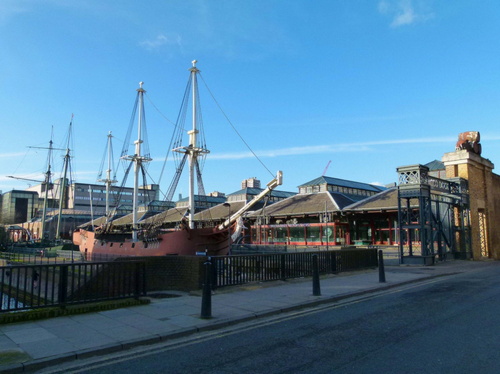
The area known as 'The Isle of Dogs', previously the heart of the Docklands industry in London until the middle of the last century. Not only docks, but brass foundries, ironworks, factories, shipbuilding yards and engineering firms once filled the land.
The Isle of Dogs is situated on a horseshoe bend on the Thames. The origin of the name is obscured in the mists of time, but it is believed that King Henry VIII kept hunting dogs here in the 1500s.